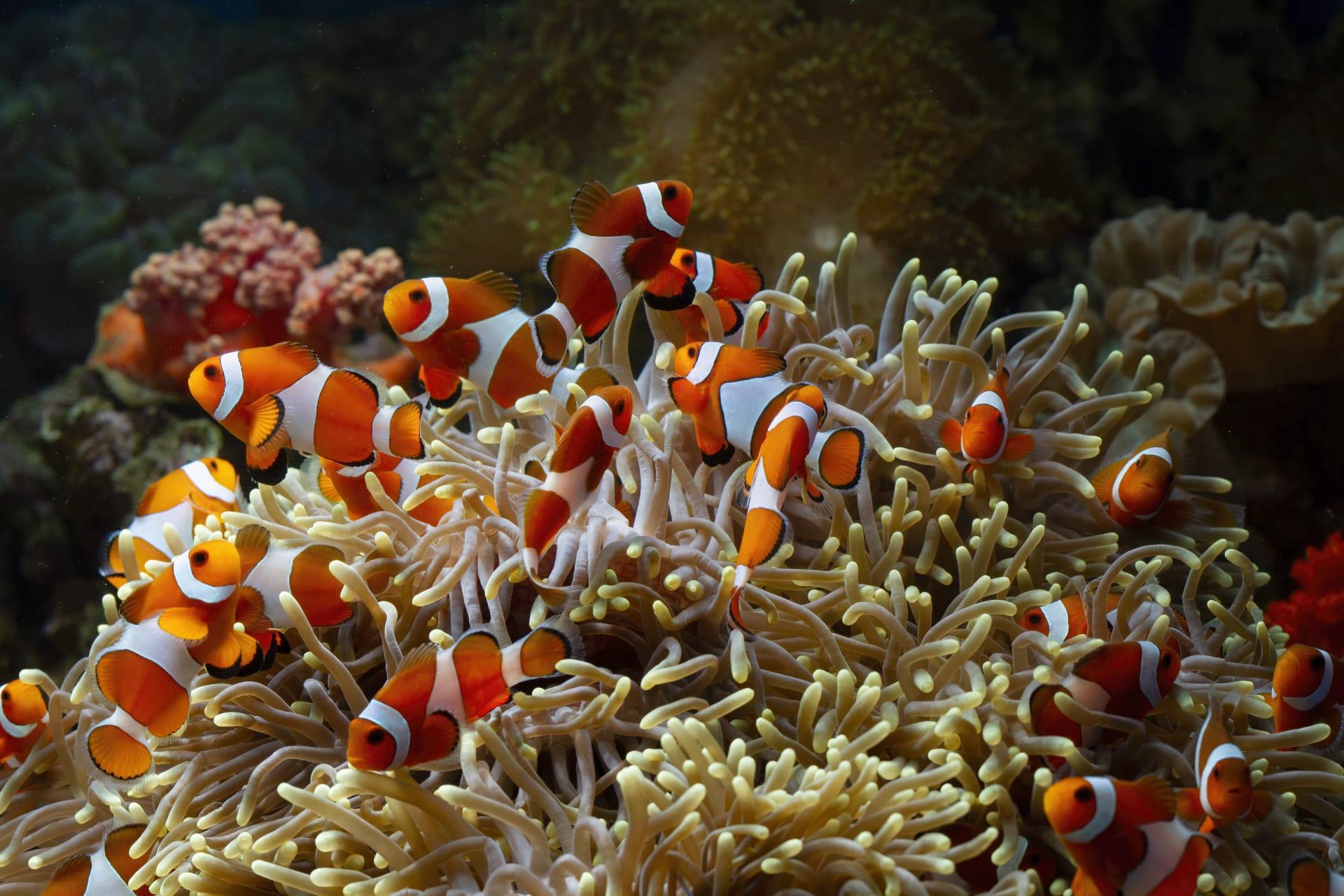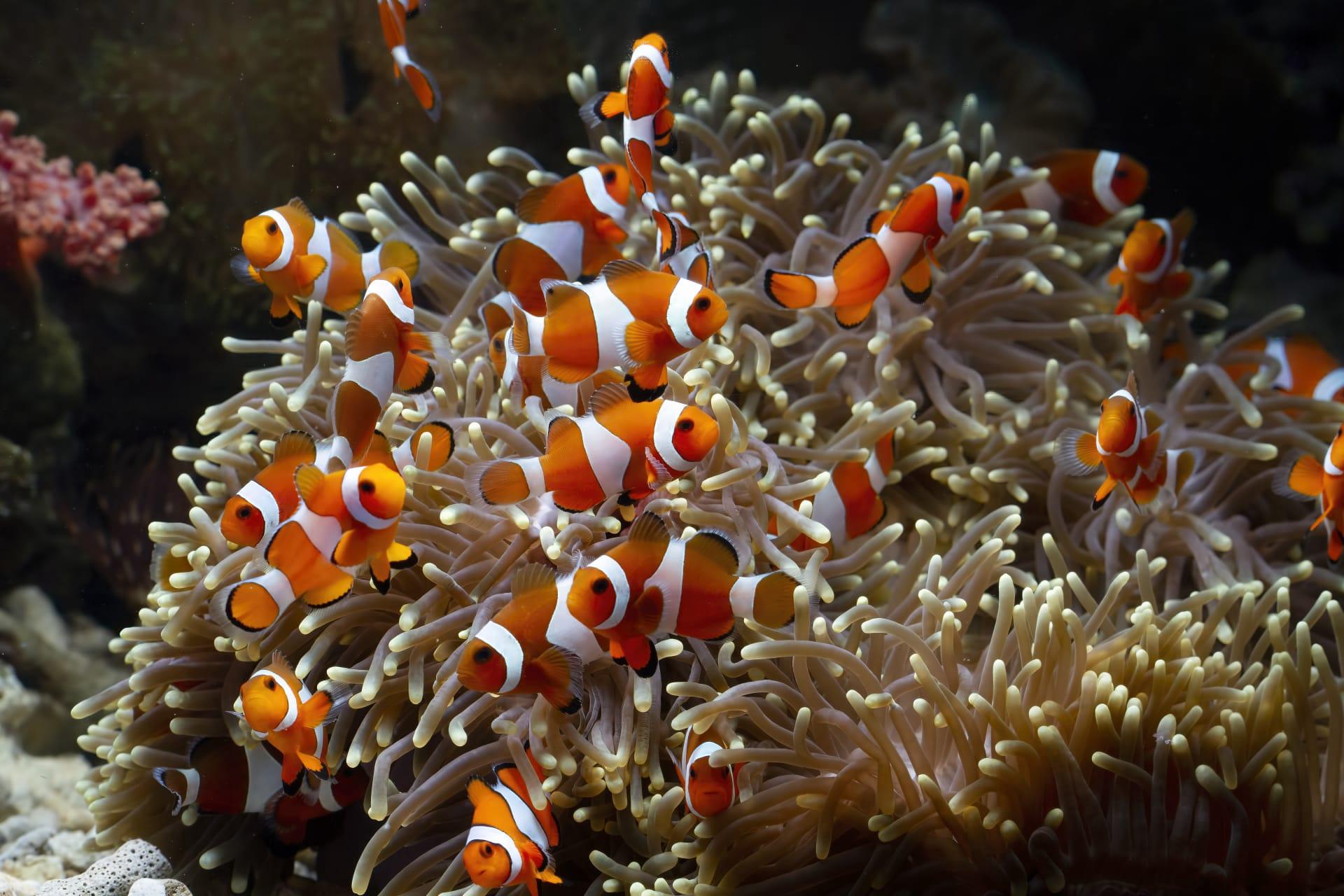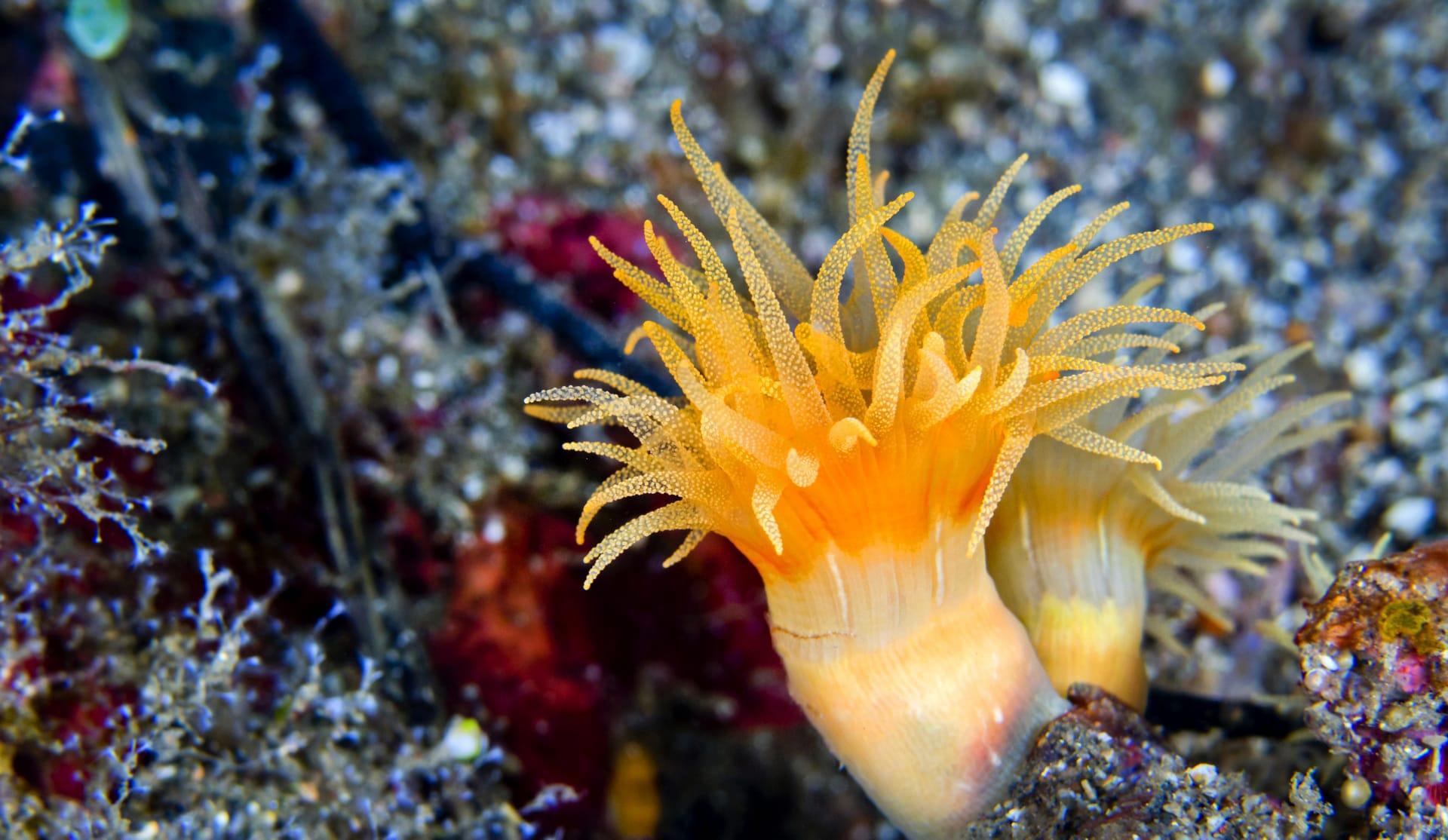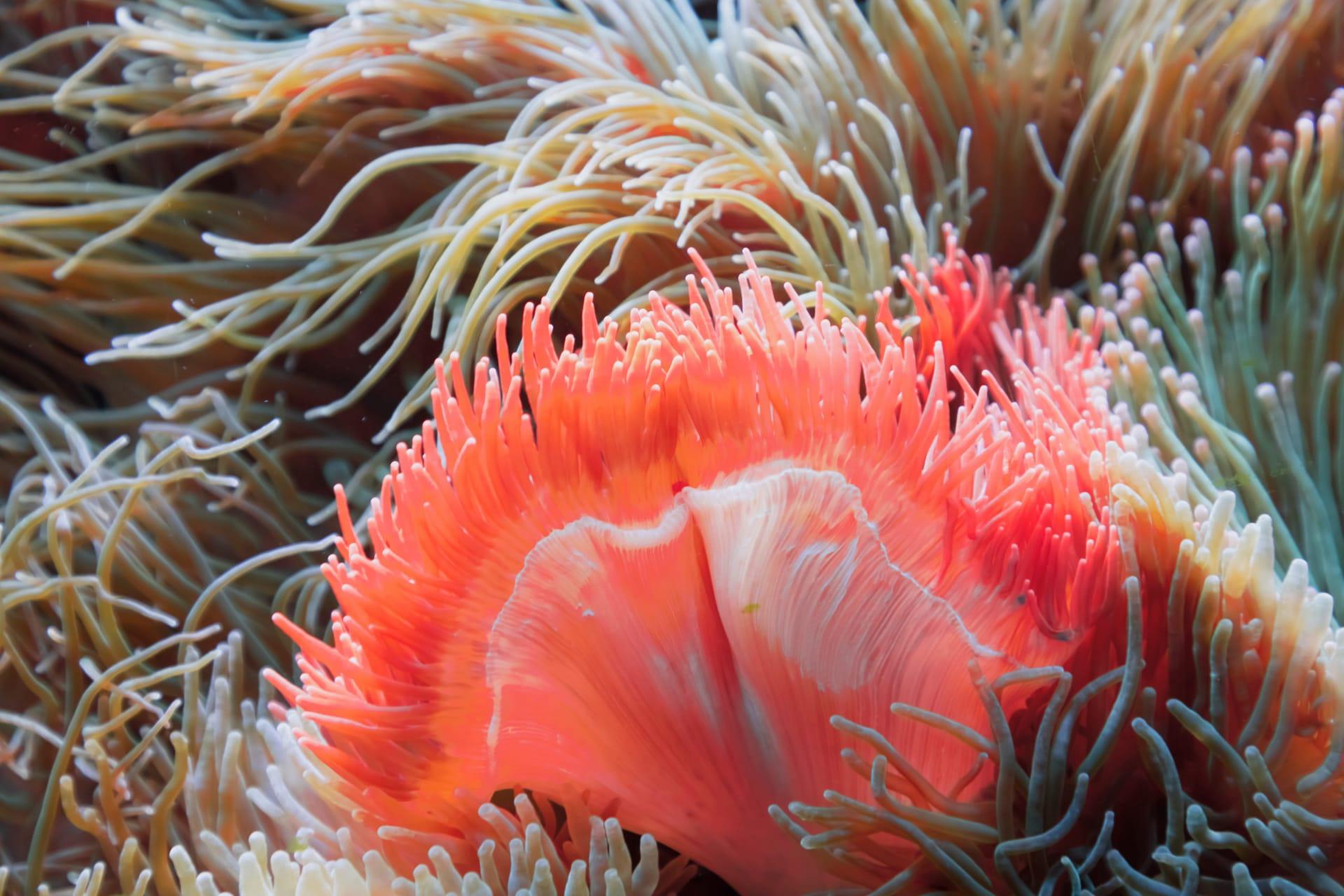Sea Anemone Characteristics
- Home /
- Mini Encyclopedia /
- Animal /
- Sea Anemone Characteristics
1
Sea anemones, fascinating marine creatures, are known for their vivid colors and graceful, tentacle-laden bodies. Resembling underwater flowers, they range in size from less than an inch to over 6 feet across. Their lifespan is remarkably long, with some species living up to 80 years or more.
The most distinct organ of a sea anemone is its tentacles, equipped with stinging cells called cnidocytes. These cells contain nematocysts, tiny capsules loaded with toxins. When triggered, they launch a harpoon-like structure that delivers venom, a mechanism vital for their survival. It helps in capturing prey and defending against predators.

2
Question: "How do sea anemones reproduce?"
Answer: Sea anemones have a unique reproduction strategy that includes both sexual and asexual methods. Sexually, they release sperm and eggs into the water, leading to external fertilization. Asexually, they reproduce through a process called budding, where a part of the anemone splits off to form a new individual. This dual approach allows them to adapt to various environmental conditions and maintain their populations.

3
Movement in sea anemones is generally subtle. They can glide slowly on their adhesive pedestals, shift positions, or even swim using their tentacles in a limited fashion. Their movement is primarily for adapting to their environment, seeking food, or avoiding harm.
In terms of feeding, sea anemones are predators. They use their venomous tentacles to immobilize and capture prey like fish and shrimp. Once their prey is incapacitated, they transport it to their mouth located at the center of their body. Their diet and effective hunting strategy are crucial for their survival in the competitive marine ecosystem.

4
Sea anemones thrive in a range of marine environments, from shallow tidal pools to deep ocean floors. They are particularly abundant in coral reefs and rocky coastlines, where they attach themselves to surfaces using their adhesive pedal disc. Adaptable to different levels of light and water conditions, they are vital members of their ecosystems.
Reproduction for sea anemones varies by species. Apart from sexual and asexual reproduction methods, they also exhibit remarkable regeneration abilities. If torn apart, some species can regenerate into two separate anemones. This resilience contributes to their longevity and ability to withstand harsh marine conditions.

5
Book: "Anemones of the Ocean" by Dr. Elizabeth Waters, published in the UK in 1998. This book delves into the biology and ecology of sea anemones, offering insights into their behavior, reproduction, and role in the marine ecosystem. It's a comprehensive guide for marine biologists and enthusiasts alike.
Book: "The Hidden World of Sea Anemones" authored by Martin H. Johnson, released in the United States in 2005. This book explores the fascinating world of sea anemones, highlighting their survival strategies, interaction with other marine life, and importance in oceanic biodiversity. It's an informative read for anyone interested in marine life and environmental conservation.